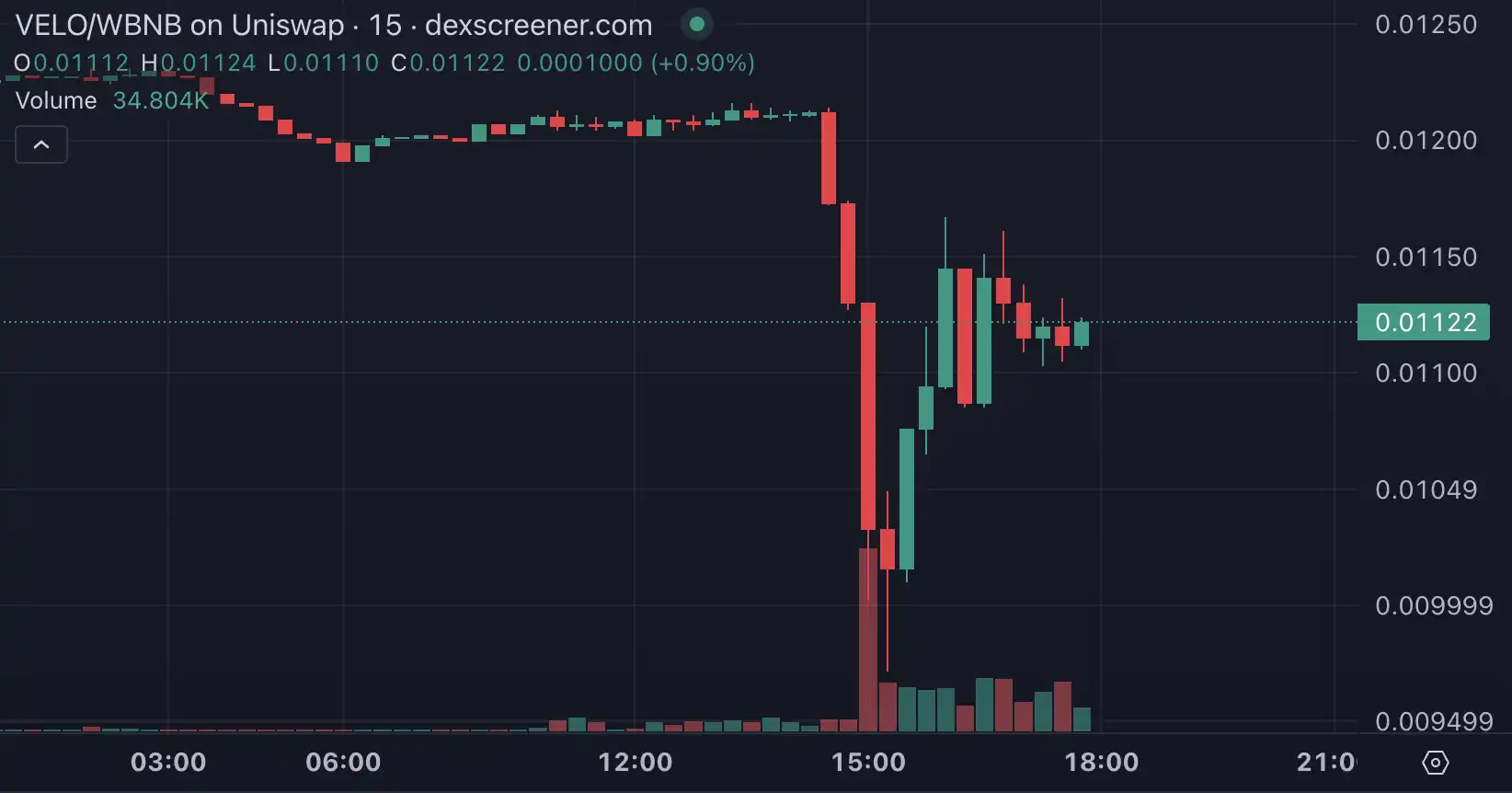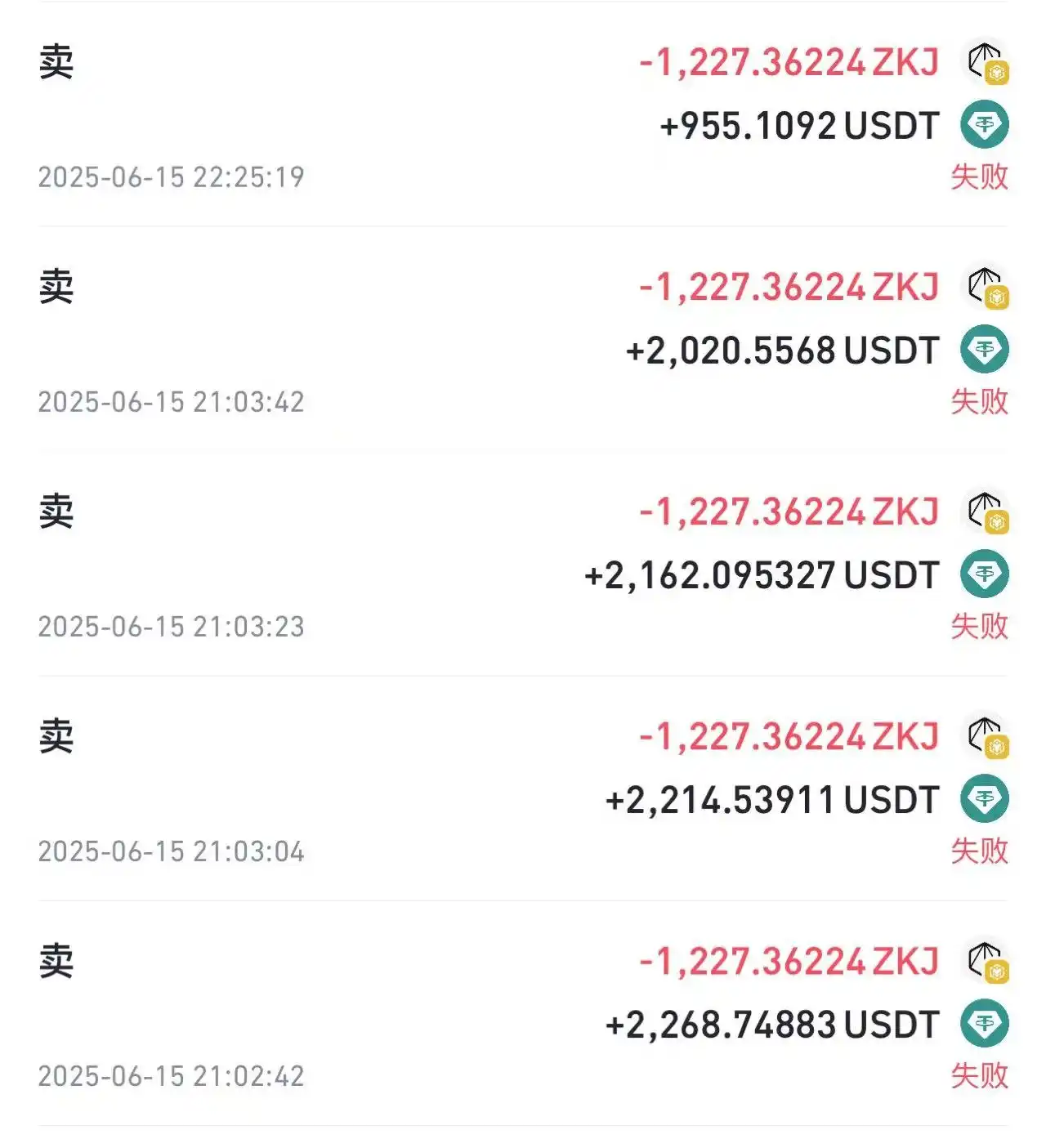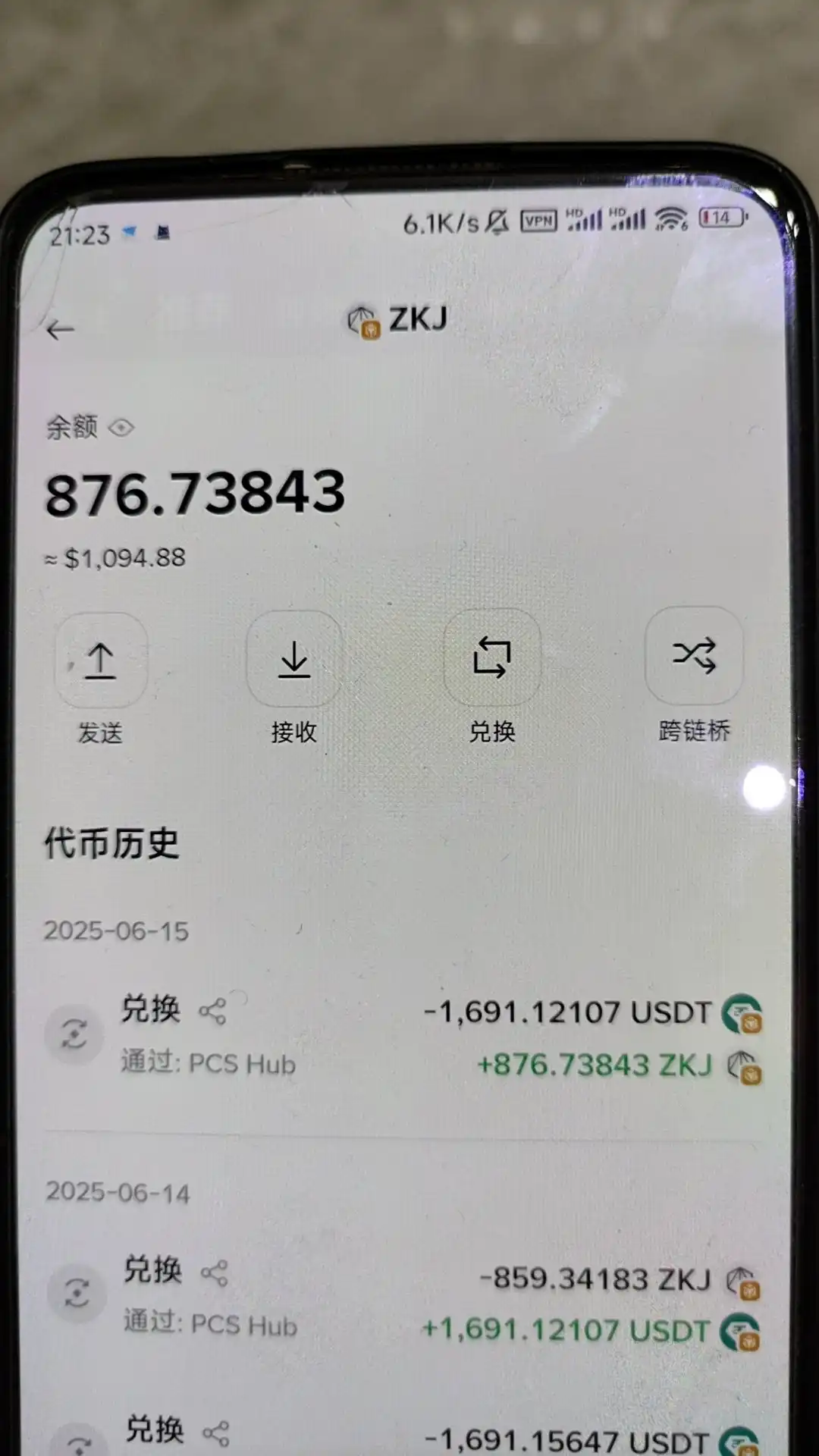100,000 people left the market, those who lost money in Binance Alpha
After the $ZKJ and $KOGE flash crashes, Binance Alphas activity has declined significantly. According to Dune veri , the number of Alpha trading users dropped sharply from a high of 233,000 on June 12 to 195,000 on June 15, with a loss of nearly 40,000 in just three days, a significant drop. As of today, the number of users who actually traded on the platform has further shrunk to 70,000, showing a cliff-like drop in user enthusiasm and willingness to participate. At the same time, the marginal cost of brushing points has increased significantly, and the cost-effectiveness of Alpha games is rapidly deteriorating.

At the same time, some of Binance Alpha’s recently launched projects have shown signs of being “funded as soon as they go online”.
BlockBeats calculated the profit of Binance Alphas new points collection project VELO. Under normal circumstances (with a principal of $1,000), the current Alpha user income is slightly profitable. If the transaction between Alpha tokens is calculated, the daily transaction wear and tear is $4, the expected income in 30 days is $224, the expected cost in 30 days is $120, and the expected profit in 30 days is $104, with an average of $3.5 per day.

Starting from 00:00 (UTC) on June 17, 2025, Binance Alpha will officially implement the new rules, and the trading volume between Alpha tokens will no longer be included in the calculation of Alpha Points. This means that strategies that once relied on arbitrage in pools such as ZKJ/KOGE will no longer be effective, and users will face higher thresholds for obtaining points and more complex liquidity structures.
It is foreseeable that due to the sharp drop in $ZKJ, Binance Alphas incentive model has entered an adjustment period. The direct consequence of this mechanism change is that a large number of users who were originally active in the Alpha ecosystem are choosing to leave. Some people have lost money in the $ZKJ/$KOGE dual-currency pool and others have found that the marginal benefits of brushing points are lower than the transaction costs and are no longer willing to invest energy.
In this exclusive interview, BlockBeats interviewed several Alpha users, including LP providers who suffered actual losses in this round of plunge, and ordinary participants who tried score arbitrage but the returns were not as expected. Some of them have decided to completely withdraw from the Alpha game, while others are still hesitating whether to continue looking for new opportunities. Through their stories, we can restore the real emotions and thoughts behind this cliff-like resignation wave.
Those who gave up
The initial returns were really high, and the fees were low, especially since we also got MapleStory. In late May, we added 20 accounts. Because of the frequent face-to-face calls, I handed the account owners accounts to them to manage themselves, and we maintained an actual transaction volume of $16,000 every day.
However, as the number of participants increased and competition intensified, Jiang Jiu said he had already noticed signs of something wrong in mid-June: I noticed something was wrong on the 14th. On that day, a few accounts had huge losses, adding up to 160 U. It was too wrong, but because I was worried about how to change the strategy, I ignored the risks that might be coming or that I was unwilling to admit. I still had too high expectations.
What’s more regrettable is that during the plunge of ZKJ, a friend of Jiangjiu mistakenly thought that his question “Have you finished brushing?” was a urging, and hastily increased his position in ZKJ, and eventually lost up to 60%. Jiangjiu recalled that he originally wanted to wait for his friend’s reply before reminding him not to continue brushing and wait and see the situation, but the other party misunderstood his intention and immediately exited the transaction. After buying, he found that he could not sell smoothly, so he asked Jiangjiu for help. Jiangjiu did not have time to explain in detail how to quickly get out at a low price, which eventually led to his friend watching the price fall. In this regard, he frankly admitted that the core of this loss was not luck, but information research and communication costs.

When asked whether he had contacted the project team, Jiangjiu said that he had not tried to seek feedback. This kind of thing is too common in the kripto circle. Unless the trading platform is willing to take the lead, retail investors will lose money and have no place to complain. They still have to be cautious.
He also added that since losing the low-fee trading pools such as ZKJ and KOGE, the loss of points has increased significantly, and the reward per period has dropped to around 50-60U, while the score threshold is getting higher and higher. He is on the verge of giving up, but I still want to struggle and see the income in the next few periods. If it is not satisfactory, I can only give up.
Unlike Jiangjiu, Mosquito operated four accounts, with a total profit of about 5000U before the crash. He discovered the abnormal fluctuation of ZKJ the day before the crash, but because the price of the currency rebounded at that time, it increased his fluke mentality.
I found that ZKJ fluctuated the day before, and I held on for an hour. I found that it went back up and I made 5U. When it plummeted that day, I found that the spike was very strong, and I thought it was the same as the day before.
This fluke mentality led to Mosquito Xiang using a second account to continue entering the market after his first account was locked up for 30U. I thought it would be the same as the day before, so I didnt move this account and continued to do the task of 1800U with the second account. As a result, the second account also began to plummet.
In the end, Mosquito decided to sell at a loss when the price dropped to 0.8, with a total loss of more than 2000U. I still didnt pay enough attention to the risk. I should have paid more attention to the size of the pool. There was indeed a large-scale withdrawal from the pool that day.

Mosquito Xiang believes that the Alpha project is nearing its end. The input and output are not proportional. If you get caught a few times, its a waste of time. Today, all the accounts have received the minimum living allowance and withdrawn.
Its not just mosquito coils. In the interview with BlockBeats, many interviewees mentioned that the input-output ratio of Binance Alpha has declined, and many people no longer choose the multi-account strategy.
Alphas dividend window may be closing.
Under sunk costs, score-brushing continues
Brother Jie is a founder of the BSC ecological community and has been involved in Alpha activities since the initial Shell IPO. As an information transmitter in the community, he also failed to avoid the systemic risk this time.
I felt at the time that when the stablecoin is no longer stable, the price will fluctuate a lot. In fact, I have already smelled the coming of the gray rhino. However, because the account management work and the time for brushing transactions will fill my personal life, (I was unable to control it in time) said Brother Jie.

During the plunge, Jie immediately stopped losses and notified group members, but still faced a large loss. He believes that this loss cannot be entirely attributed to luck: I can only say that I need to pay tuition to the market again. There are still many ways to avoid this situation. Its just that I happened to catch up with this time when I was doing a large amount of swiping, and two accounts were swiping at the same time, so I couldnt avoid the situation of being cut in half on the spot.
This experience made Jie reflect on his own risk control strategy, especially the importance of on-chain monitoring tools. He thinks that some on-chain monitoring tools will be needed in the future. I felt the price of the currency at the first time. The capacity of the pool is decreasing, so the price of the currency will bring greater fluctuations.
Despite this, Jiege said he would continue to participate in Alpha. Its worth continuing to work hard if there is profit. Of course, I also look forward to more innovative fair launch models from Alpha.
The initial strategy was 33 times at 60,000, and then 66 times at 130,000. The profit has not yet been calculated in detail, Siner said. This high-frequency, high-amount trading strategy can bring considerable profits during periods of stable currency prices, but it also exposes greater operational risks.
His main losses did not come from market fluctuations, but from human errors: The main reason for the loss was my own mistakes. The first one was that I forgot to sell Koge on the 16th, and then I decided to buy 130,000, which was a bit too aggressive. The account that I forgot to sell has now dropped from 1,000 u to 400 u.
Large-scale account operations also bring efficiency challenges. I usually refresh all the files in 1-2 hours, but the workload of 170,000 files is too heavy, so I refreshed for four or five days in a row, and there were no refreshes.
Unlike many users who have left the market, Siner is still confident about the future of Alpha. When asked if he would continue to brush Alpha, Siner said, I must continue. I have just found a lossless method. This means that he will continue to look for opportunities for speculation in the Alpha ecosystem, even after the rules are adjusted.
For Tian Ge, who did not suffer any losses in the ZKJ crash, quitting Alpha means that the sunk costs of the early investment cannot be recovered. There are already 200% sunk costs in the early stage. If you give up, its equivalent to throwing everything away. And if there is a good project on Alpha later, you can get your money back in one wave.
Brother Tian summarized the mentality of participating in the Alpha project like this: They are all rubbish projects, dont have any feelings for them.
Çözüm
Jiangjiu admitted that the income from Alphas scoring can no longer cover the operating costs. Now the reward is only 50 or 60 U, the score threshold is high, and the transaction slippage is getting bigger and bigger. You may only make three or four yuan a day. The collapse of ZKJ/KOGE took away not only the principal, but also a low-cost arbitrage path. Once the Alpha project cancels the rule that the transaction volume between token pairs is counted into the points, users will face higher transaction wear and tear and a more complex point game structure.
Binance Alpha was once seen as an innovative mechanism to revive on-chain activity and user engagement, but the current points model clearly overestimates the long-term incentive effectiveness of trading volume and LP, and underestimates the risk of structural runs.
With the implementation of Binances new rules, Alpha is gradually shifting from a tool for arbitrage to an incentive mechanism that focuses more on real interaction and value capture. This means that points are no longer based solely on transaction volume or LP quota, but are more inclined towards dimensions such as holding time, interaction depth, and real demand.
However, for many users who rely on low-cost scoring strategies, this shift forces them to re-evaluate the significance of participation. If Alpha wants to restart its growth engine in the future, it will have to find a new balance between fair distribution and risk control mechanisms.
For users who are still exploring the Alpha ecosystem, it is recommended to strengthen risk management awareness, pay attention to indicators such as pool structure, token fundamentals, and LP concentration, and avoid becoming the receiver when the next systemic risk is exposed. After all, in this Web3 world of constant trial and error, the window for arbitrage will always exist, but the cost of stepping on thunder has never decreased.
This article is sourced from the internet: 100,000 people left the market, those who lost money in Binance Alpha
Related: Solana REV explodes, is the chain value really underestimated?
Original article by: @mteamisloading, co-founder of @spire_labs Original translation: zhouzhou, BlockBeats Editors note: REV measures on-chain economic activity and reflects users willingness to pay. Solana REV is higher than Ethereum, but REV is lagging and easy to manipulate. The FDV/REV ratio varies greatly, and the chain and token value do not completely correspond. It is necessary to comprehensively evaluate the value of the chain based on multiple factors. The following is the original content (for easier reading and understanding, the original content has been reorganized): What is REV? REV stands for Real Economic Value and measures the total fees paid by users for use across the entire chain. Solana generates about 2 to 4 times the REV of Ethereum L1. So why is this metric important? Are Solana and ETH…







